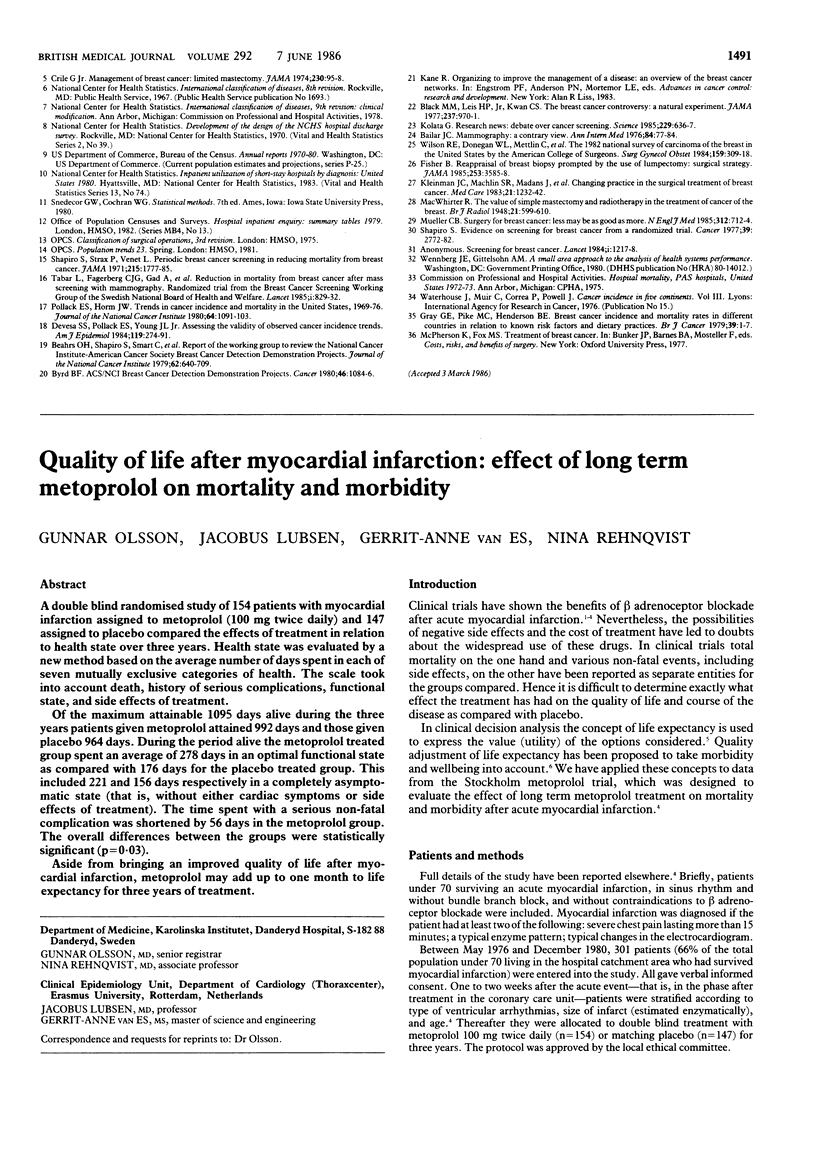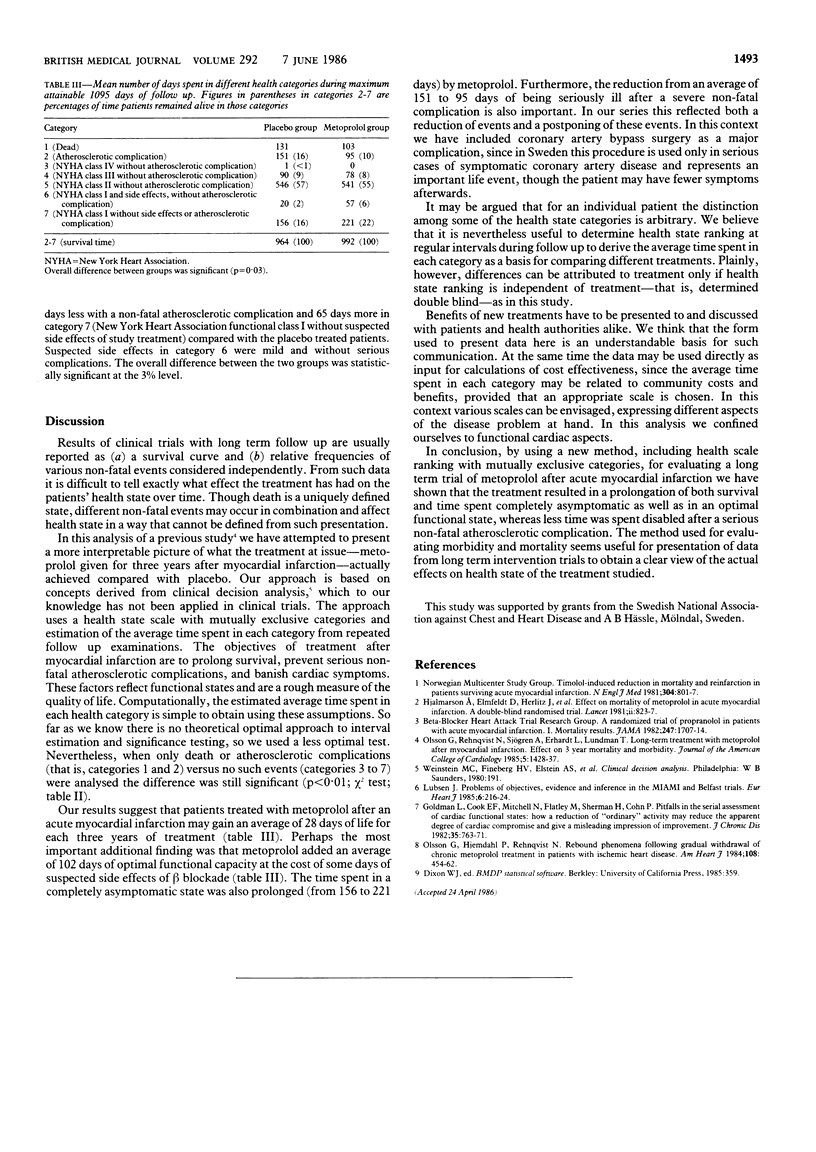Abstract
A double blind randomised study of 154 patients with myocardial infarction assigned to metoprolol (100 mg twice daily) and 147 assigned to placebo compared the effects of treatment in relation to health state over three years. Health state was evaluated by a new method based on the average number of days spent in each of seven mutually exclusive categories of health. The scale took into account death, history of serious complications, functional state, and side effects of treatment. Of the maximum attainable 1095 days alive during the three years patients given metoprolol attained 992 days and those given placebo 964 days. During the period alive the metoprolol treated group spent an average of 278 days in an optimal functional state as compared with 176 days for the placebo treated group. This included 221 and 156 days respectively in a completely asymptomatic state (that is, without either cardiac symptoms or side effects of treatment). The time spent with a serious non-fatal complication was shortened by 56 days in the metoprolol group. The overall differences between the groups were statistically significant (p = 0.03). Aside from bringing an improved quality of life after myocardial infarction, metoprolol may add up to one month to life expectancy for three years of treatment.
Full text
PDF


Selected References
These references are in PubMed. This may not be the complete list of references from this article.
- Goldman L., Cook E. F., Mitchell N., Flatley M., Sherman H., Cohn P. F. Pitfalls in the serial assessment of cardiac functional status. How a reduction in "ordinary" activity may reduce the apparent degree of cardiac compromise and give a misleading impression of improvement. J Chronic Dis. 1982;35(10):763–771. doi: 10.1016/0021-9681(82)90087-x. [DOI] [PubMed] [Google Scholar]
- Hjalmarson A., Elmfeldt D., Herlitz J., Holmberg S., Málek I., Nyberg G., Rydén L., Swedberg K., Vedin A., Waagstein F. Effect on mortality of metoprolol in acute myocardial infarction. A double-blind randomised trial. Lancet. 1981 Oct 17;2(8251):823–827. doi: 10.1016/s0140-6736(81)91101-6. [DOI] [PubMed] [Google Scholar]
- Olsson G., Hjemdahl P., Rehnqvist N. Rebound phenomena following gradual withdrawal of chronic metoprolol treatment in patients with ischemic heart disease. Am Heart J. 1984 Sep;108(3 Pt 1):454–462. doi: 10.1016/0002-8703(84)90408-3. [DOI] [PubMed] [Google Scholar]
- Olsson G., Rehnqvist N., Sjögren A., Erhardt L., Lundman T. Long-term treatment with metoprolol after myocardial infarction: effect on 3 year mortality and morbidity. J Am Coll Cardiol. 1985 Jun;5(6):1428–1437. doi: 10.1016/s0735-1097(85)80360-0. [DOI] [PubMed] [Google Scholar]


